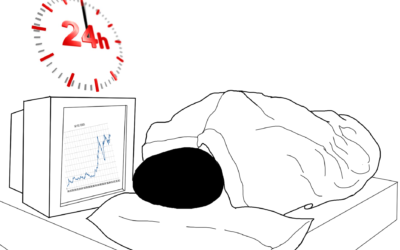NZD moves are greatly influenced by Commodity Prices and Reserve Bank of New Zealand Monetary and Fiscal Policy.
A change in prices of commodity goods greatly affect the New Zealand dollar and the whole economy.

Several factors affect the value of NZD but we shall discuss the major ones.
economic data that moves the NZD.
The main data that moves the NZD (Australian dollar) include;
1. Gross domestic product (GDP)
Gross domestic product data release serves as a major economic news in New Zealand. It greatly moves the NZD
This is because it shows the overall performance of the country’s economy. This reflects the strength of the NZD.
A positive GDP attracts investors and increases more demand for the NZD and this is healthy for the New Zealand economy.
Whereas a negative GDP report is bad news to investors and may cause a panic to selling off of the NZD hence weakening the NZD.
2. Consumer price index CPI
The consumer price index measures the general consumption of the countries consumer goods and services at the general price level.
This helps to determine price differentials of the same goods and services to track inflation.
Low CPI indicates weak NZD
It’s the duty of the RBN to regulate inflation levels by regulating money supply through its monetary policies.
A positive CPI may be an indication of future inflation and to the investors and traders may expect a corresponding rise in interest rates.
3. Interest rate decisions
The interest rate decisions is also an important economic news in New Zealand.
This heavily moves the NZD as this is a major determinant in trade.
This can either be in favor of the NZD value or not.
If the government wants to reduce money supply in the economy ,
The RBN will opt for a rise in interest rates hence NZD appreciates
This limits borrowing and encouraging savings.
On the other hand,
If its aim is to increase the NZD in circulation, the RBN will cut the interest rates.
The aim is to make spending and borrowing cheap hence discouraging saving.
This is to boost the local investment and increase demand for local products.
As of today, its rate is at 0.25%.
4. Balance of trade.
New Zealand being largely dependent on international trade, trade balance has become a major concern for investors and traders.
They look at it to gauge the countries performance on the country’s international demand for its products.
A positive balance of trade indicates a health economy and strong NZD while a negative balance shows a weak economy hence weak NZD
5. UNEMPLOYMENT RATE
This helps the government to track the number of people in New Zealand that are out of employment/ not working.
Unemployment reduces the level of consumption and increase burden for the government to provide for its citizens.
As a result, government expenditure increase and may lead to increase in national debt.
It also reduces tax revenues to the government and reduces people’s confidence to spending.
A high unemployment rate is a sign of poor economy and a weak NZD.
With low unemployment rate, the New Zealand’s economy is strong and so the NZD.
Trading the NZD/USD
The strong economic new release from both countries affect the pair.
For example,
If the news release from FED is favoring the dollar, the USD becomes stronger than the NZD. You short the NZD.
If the FED news is not in favor of the dollar then buy the pair.
On the other hand,
If news release from New Zealand is in favor of the NZD, its time to buy the NZD/USD pair. Or else short when the news is not in favor of the NZD.
getting to know The NZD
The NZD is referred to as kiwi by most forex traders.
It is among the popular currencies traders love due to its good supporting economy and its relatively high interest rates.
The NZD was launched in 1967 to replace the New Zealand pound and decimal currency was introduced in New Zealand.
The NZD is one of the top ten currencies traded in the world and is considered a flight to quality in times of crisis
NZD as Commodity currency.
New Zealand economy greatly depend on it’s exports of commodity goods.
This means, a change in prices of commodity goods greatly affect the New Zealand dollar and the whole economy.
The exports value is highly correlated to New Zealand’s currency value due the country’s great dependence on international trade.
For instance,
A fall in demand for commodity goods lead to fall prices of commodity goods and also less demand of the NZD. This may cause a corresponding decline in the NZD value.
On the other hand,
If the demand for commodity goods rise, commodity prices will rise and the demand for NZD will also increase.
The increase in New Zealand’s export value will also lead to appreciation of the NZD value.
The carry trade.
The NZD is a good currency for carry trade due to its high interest rate compared to other major currencies of JPY, USD, Euro and GBP.
The interest differentials between different economies with different rates offer extra yield to traders that run for high return investments.
Like we said before,
Carry trade is selling currency with low interest rate to buy the one with a higher interest rate.
The difference between the rates is the yield earned.
New Zealand facts and data
- Country Name: New Zealand (English); Aotearoa (Maori)
- Government Type: Parliamentary Democracy Under A Constitutional Monarcy
- Capital: Wellington

- Independence: 26th December 1907
- National Symbol: Kiwi
- Neighbours: Australia, New Caledonia, Fiji and Tonga
- Head of state: British Monarch; Queen Elizabeth II
- Prime minister; Jacinda Ardern
- Official languages: English, Maori and the New Zealand sign language
- Currency: New Zealand dollar (NZD), NZ$
- Imports: $34.83 billion
- Exports: $31.96 billion
- Website: http://www.newzealand.govt.nz
- Major Cities : Auckland, Wellington, Christchurch, Dunedin, Hamilton,Palmerston North.
Monetary and fiscal policy moves the nzd
The Reserve Bank of New Zealand is the New Zealand’s Central Bank that implements the governments monetary and fiscal policy.
Its main objective is ;
- To achieve the country’s price stability, regulating money supply into the economy.
- Control inflation to at least 1-3% protecting the currency value keeping it on average of 2% target.
- To ensure economic development through increasing employment rate and production.
How long should you hold an Open Position ?
How long you can hold an open position in forex, is a personal thing for all traders. The decision is all yours. You know what your goals are as a trader, the kind of strategy you use to trade. All this starts from what you are? and What you want? If I am to answer,...
- Oh, bother! No topics were found here.



